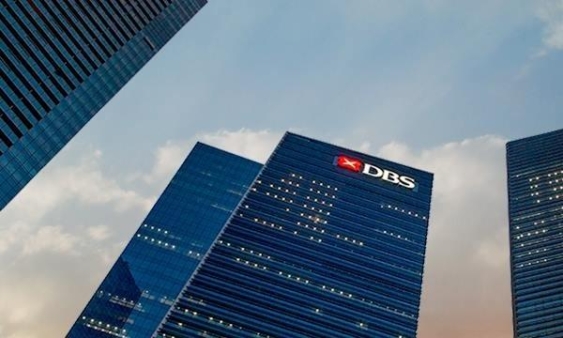
DBS' H1 net profit nosedives 26% to S$2.41b
The bank has cast aside S$1.26b to bolster its balance sheet.
DBS has posted a 26% YoY crash in its net profit to S$2.41b in H1 from $3.25b in H1 2019 as total allowances jumped five-fold to S$1.94b, according to an announcement.
The bank has allotted S$1.26b in general allowances to fortify its balance sheet against pandemic-led pitfalls. It triggered the increase in the amount of general allowance reserves by 50% to S$3.80b, 24% above the minimum requirement set by the Monetary Authority of Singapore (MAS), the bank said.
Total allowance reserves lept to S$6.72b, which surpassed non-performing assets and boosted allowance coverage to 106% and to 199% when collateral was considered.
In addition, total income rose 7% to S$7.75b from S$3.709b in H1 2019. Net interest income increased 1% YoY to S$4.79b as loan and deposit growth were offset by lower interest rates. Loans grew 5% in constant-currency terms from a year ago to S$375b, with S$12b of the growth occurring in H1 2020. Non-trade corporate loans ballooned to S$20b due to drawdowns in Singapore and Hong Kong.
Higher deposit volumes also had a positive impact on net interest income. Deposits grew 13% YoY to S$447b, with S$36b of the increase occurring H1 as current and savings accounts rose by a record S$54b. The proportion of current and savings accounts rose seven percentage points from a year ago to 66%.
Further, H1 net interest margin (NIM) fell 16bp YoY, with the first quarter at 1.86% and the second quarter at 1.62%. The decline in the second quarter was due to sharp cuts in interest rates as central banks globally responded to the pandemic and to the deployment of excess deposits into lower-yielding assets.
Fee income inched up 1% to S$1.51b with growth in Q1 countered by a decline in the Q2. Wealth management fees grew 9% YoY in H1 to S$707m as record investment product sales in Q1 were moderated by lower bancassurance sales. Loan-related fees increased 10% to S$226m due to a higher number of transactions in the first quarter. Brokerage fees increased 25% to S$74m from higher equity market volumes during H1.
Credit cards fees crashed 21% YoY to S$304m as transactions fell with lower consumer spending from March, whilst investment banking fees fell 19% YoY to S$63m due to weaker market conditions. Lastlly, transaction service fees were deemed stable at S$374m.
As for the bank's non-interest income, the figure surged 42% YoY to S$1.45b. Trading income dipped 6% to S$752m as a decline in Q1, no thanks to wider credit spreads that was moderated by an increase in Q2. Treasury customer income was higher in both quarter, whilst net gains on investment securities jumped almost three times to S$663m as profits were realised on fixed income portfolios which appreciated with lower interest rates.
Expenses in H1 were stable at S$3.04b. Staff costs edged up 2% YoY as higher base salary costs from an increased headcount were moderated by lower bonus accruals and by government grants. Non-staff costs were 3% lower as general expenses such as for travel and advertising declined.
Meanwhile, DBS' consumer banking/wealth management income slipped 3% YoY S$3.08b, no thanks to lower contributions from deposits and cards more than offset increased investment product and loan income. Institutional banking income likewise fell 1% to S$3.01b as a decline in cash management income due to lower interest rates more than offset the benefit of higher loan volumes and treasury product sales.
Treasury markets income surged 44% YoY to S$714m, whilst income from the “others” segment rose 69% to S$949m, which is said to reflect gains on investment securities managed by corporate treasury.
DBS' non-performing assets (NPA) rose 10% to S$6.35b in H1 as new NPA formation was moderated by write-offs and recoveries. Most of the new NPA occurred in Q1, which included a significant oil trader exposure. The NPL rate was 1.5%, below the 1.6% in March and unchanged from H2 2019.
Liquidity remained ample as the franchise benefited from flight-to-quality inflows, DBS said. Deposits grew 9% YoY to S$447b, leading to a loan-deposit ratio of 84%. The liquidity coverage ratio of 134% and the net stable funding ratio of 121% were both maintained above regulatory requirements of 100%.
Capital was also deemed healthy. The Common Equity Tier-1 ratio declined from 14.1% from December 2019 to 13.7% as risk weighted assets increased from loan growth, credit exposures on derivatives, and market risk. The leverage ratio of 6.8% was more than twice the regulatory requirement of 3%.
In line with MAS’ guidance for local banks to moderate the dividends for FY2020, the board has declared an interim one-tier tax-exempt dividend of 18 cents for each DBSH ordinary share for Q2, to which the DBSH Scrip Dividend Scheme will be applied. The interim dividend is payable on or about 5 October, whilst the estimated dividend payable is at S$457m.






















 Advertise
Advertise








